I am a textile artist with a diverse cultural background. Since I spent part of my childhood in Kazakhstan, ... (read more)
felt-ro is textile art by Christina Krämer, that's me.
felt-ro is divided, stands between two languages, between different cultures, between attack and retreat, ratio and emotion, between carpet and painting, surface and object, between worlds - just like me.
felt-ro is an island that can contract to the size of a dust particle and expand into an infinite universe. felt-ro is my island! - Is it also yours?
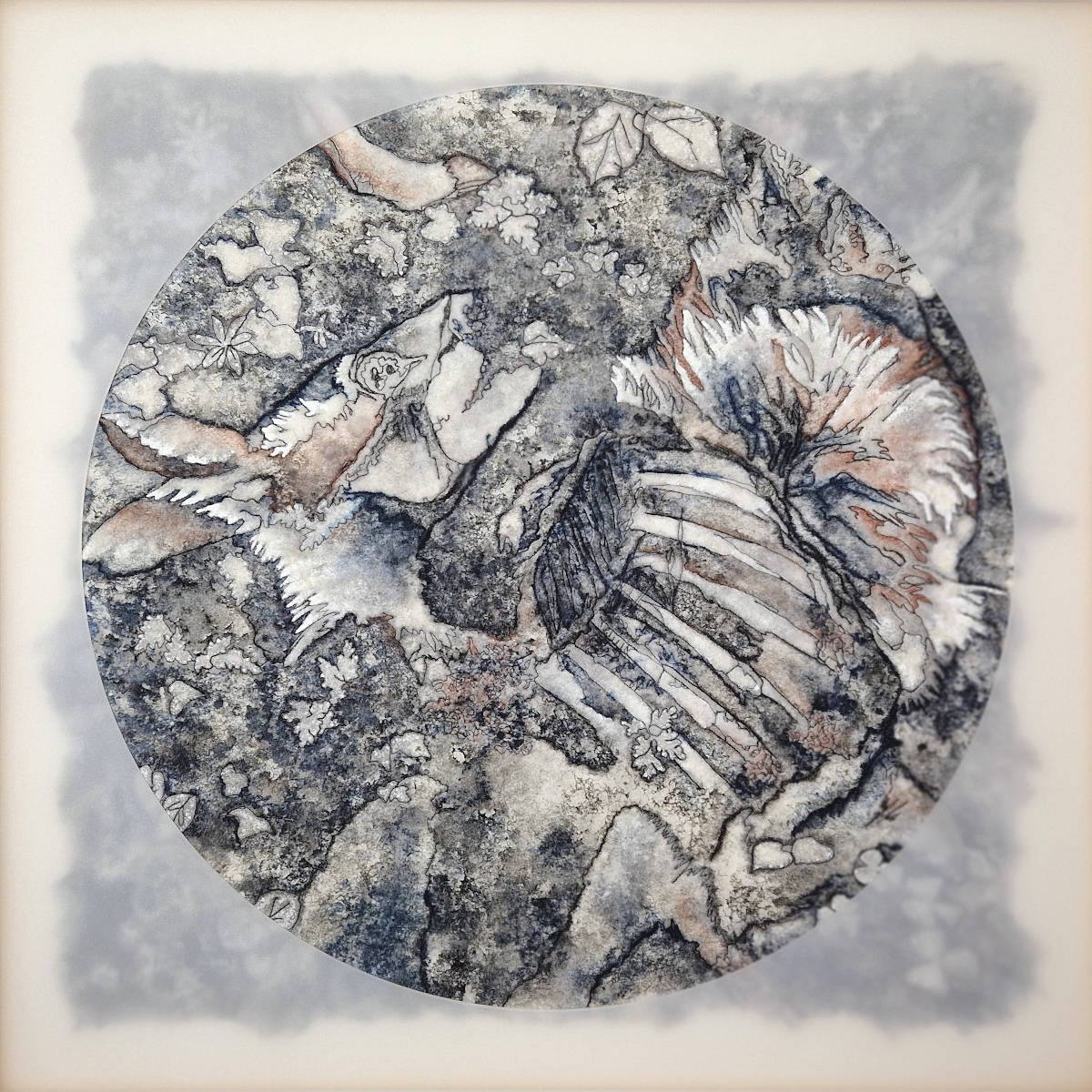
63x63 cm
The SPURENSUCHE (search for spoor) series began with the work REH and was created after an encounter with the carcass of a deer during a hike in the forest in 2022. The remains of the animal, its posture, the sunlight shining through the treetops and the resulting atmosphere at the site had left such deep marks on me that dealing with it was and still is unavoidable. Since then I have been finding dead animals again and again and have included one or two in the series. For me, SPURENSUCHE is about the emotional impact of each encounter on me and the rational attempt to interpret differences. In short: Why am I more affected and more empathetic towards some animals than others? Are there differences in the value of past lives and why?
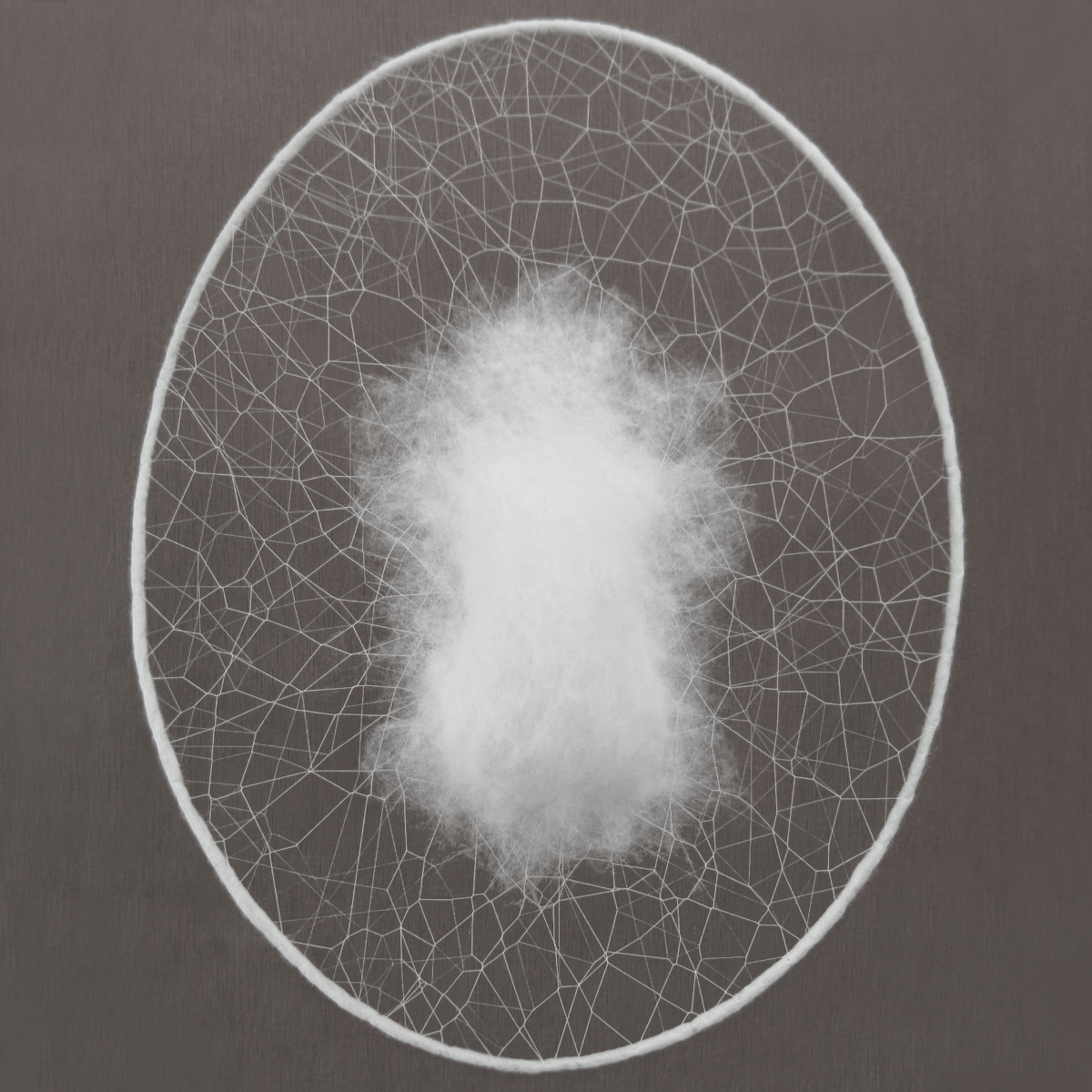
58x47.5x21.5 cm
NIDO DI RAGNO IN QUINTA stands for vulnerability, adaptation, contortion, security, hiding place, danger, life, protection, ... humanity. The title refers to Italo Calvino's "Il sentiero dei nidi di ragno". “The Path to the Nest of Spiders” is a safe and secret place for the boy Pin, his personal hiding space. "Quinta posizione" refers to the fifth position in the ballet.

I (62x62 cm), II (108x55 cm), IV (42x42 cm)
Misogyny is a topic that constantly concerns me. As a woman, any kind of hostility towards women affects and hurts me deeply. As an artist, this topic just doesn't let me go, it boils inside me and breaks out again and again to echo in my work, like an alert or a whistle that shakes me up, suddenly, without warning. Maybe that's why I find pictures of the Madonna so fascinating. In art one encounters her everywhere. She is one of the most famous women in history, seemingly spared from hostility and on the contrary she continues to be quoted, portrayed and revered as a mother, refuge and icon. The story of the series MADONNA SENZA BAMBINO begins with this contrast between the MADONNA and us mortal women. Senza bambino i.e. without a child! MADONNA SENZA BAMBINO tries to focus on being human and female - even without children. It is a project that was created to address a discomfort, a feeling of social exclusion. Anyone who gets involved with my Madonnas will have the opportunity to deal with different stories, to be reflected in them and to recognize themselves. My Madonnas have already released a number of stories and memories in the viewers, which illustrates how important it is for everyone involved to have the opportunity to express emotions and to give each other support and an open ear. These are portraits of ordinary women, inspired by icon painting and elevated by it. The medium is textile art, which is often associated with female domestic work such as embroidery and sewing, and is unfortunately still viewed by many as a less important artistic genre.
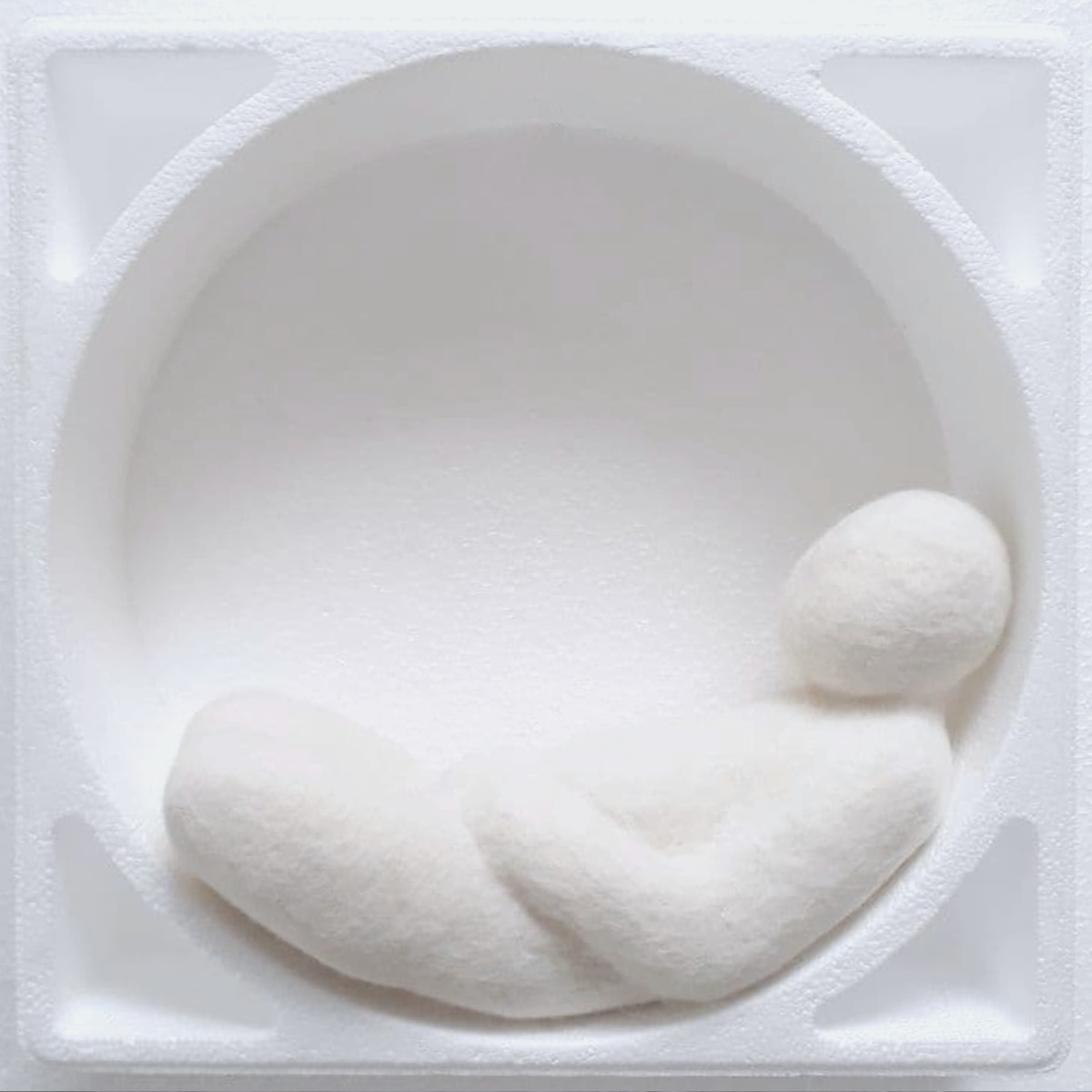
27.7x27.7x10 cm
In a PREFAB BUNKER there lies a homunculus, which has no special characteristics and stands for anyone. He lives in a very small room that consists of the packaging of a frozen cake. This packaging represents all kinds of wrapping for finished products, as they have assumed an undreamt-of dimension in many households in the time of increased being at home and buying in stock. In this unfelted, decor-free and therefore hard and uncomfortable-looking dwelling, the effects of isolation, confinement, monotony, lack of movement, gluttony and vulnerability on the completely felted, soft and organic-looking homunculus can be seen. The subject of „HOMUNKULUS IM FERTIGBUNKER“ is refuge. It's about our home, which becomes a shelter, our bunker, in times of need and danger.
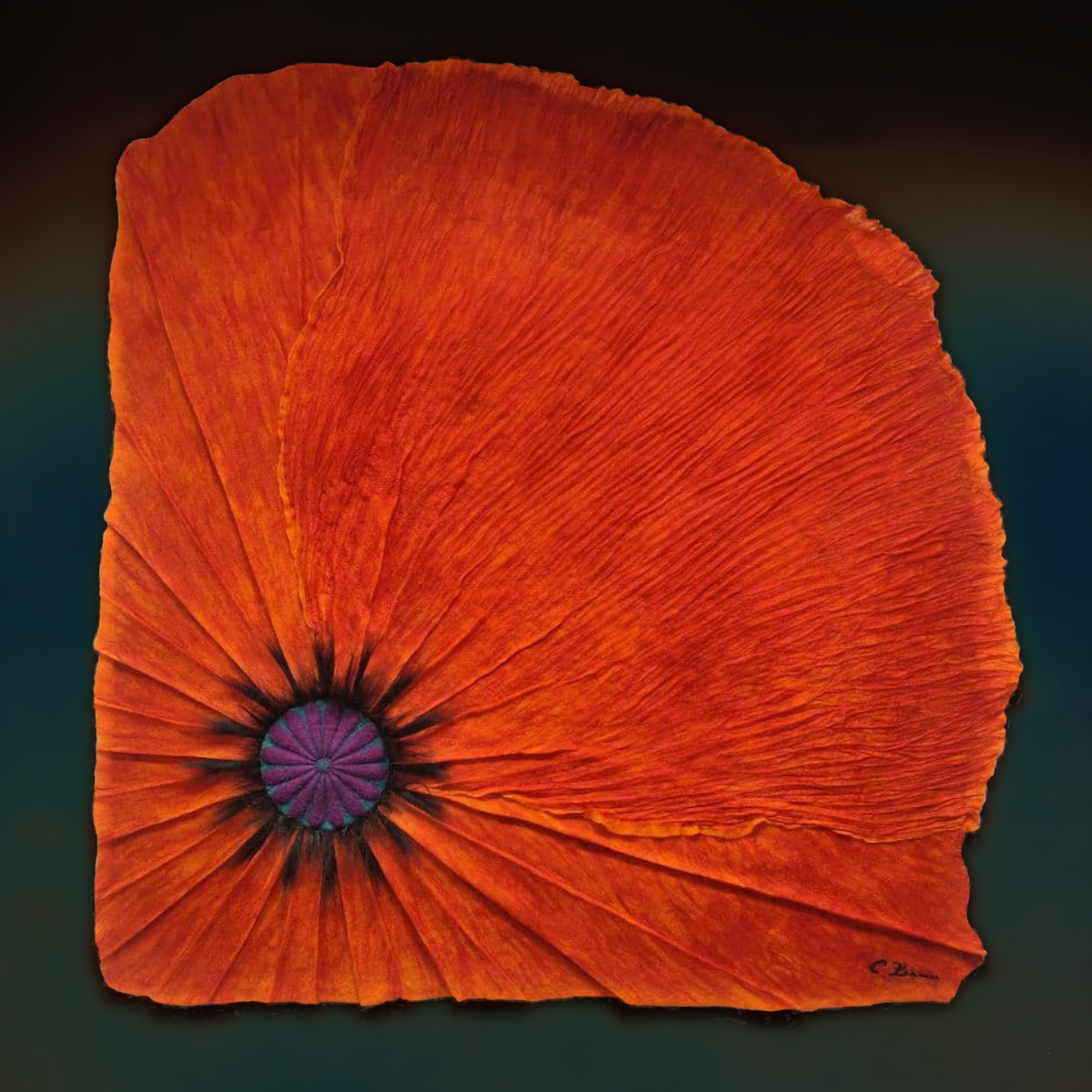
173x169x8 cm
Nature fascinates with vitality, resistance and diversity, but also with fragility, delicacy and transience. This fascination and the human's delusions of grandeur and validity drive us to try to control nature, to rule and dominate it, to bend it and, if necessary, to break it. Until it's ours !?

55x122x19 cm
Beauty, sexuality, fetish, force and coercion. What role does the individual play in this piece? Who has the power? Who is in control? Who has the choice?
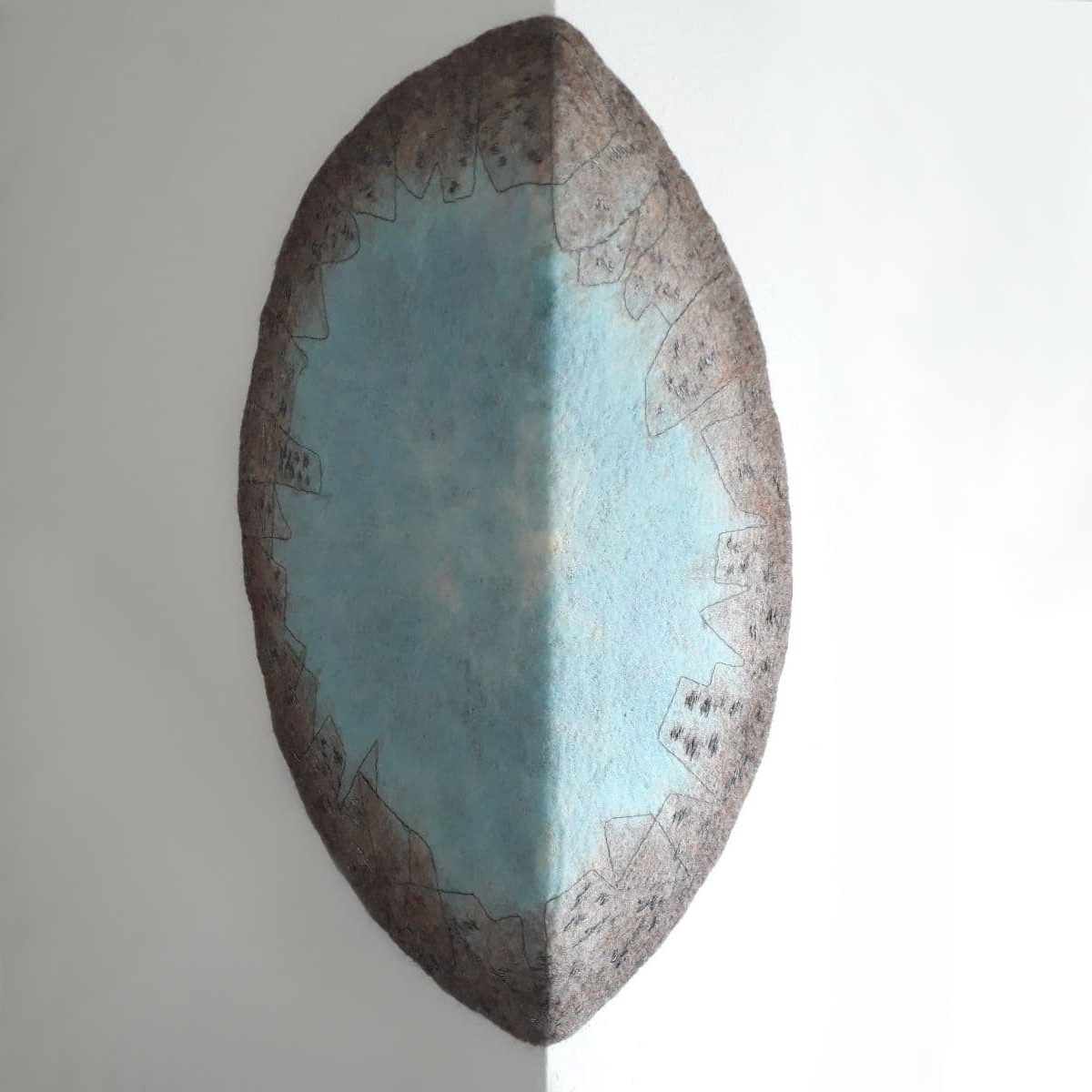
84x78 cm
My island, my environment, my network. Everything is turning. How do I get hold of things, keep track and not get carried away?
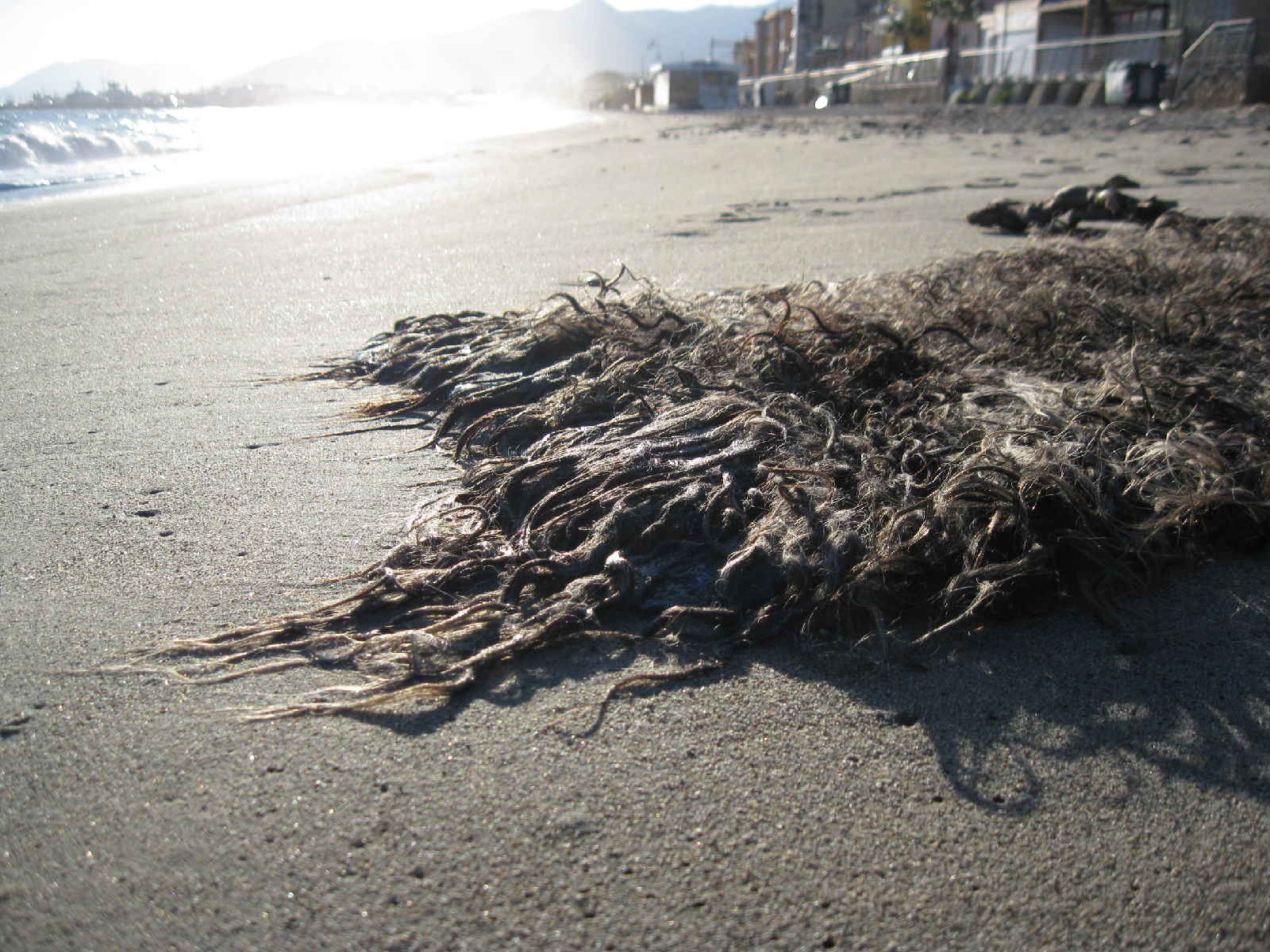
140x95x4 cm
Two sides, diremption, discrepancy. Debarking or floating? For many, finding a place of peace and security means a journey accompanied by an omnipresent question: to settle or to keep looking?
I am a textile artist with a diverse cultural background. Since I spent part of my childhood in Kazakhstan, felt rugs are not too exotic products for me. There, they are traditionally made in group and then used as wall covering and flooring because of their thermo-regulating properties. However, I grew up in Germany and am convinced that the contrast between my two countries of origin represents a significant advantage for my work. In 2010, I moved to northern Italy for professional reasons and can now call a third country home in a way. In Turin felt-ro was born and still manages to combine my love for natural raw materials with traditional manufacturing techniques and to drive my experimental urge since it can be freely shaped because it is not constrained to a thread system nor to a machine size and therefore does not need to be rectangular or edgewise.
Since 2018 I live and work again in Germany, in Hamburg to be exact.
My works are the result of a lengthy, conceptional and creative manual process and consist mainly of virgin wool. Therefore they present all the advantages that this renewable resource offers. In terms of content, my leitmotif is the fascination for structures and processes of decomposition and transformation in nature, as well as sensitivities and moments of friction between humans and their environment.